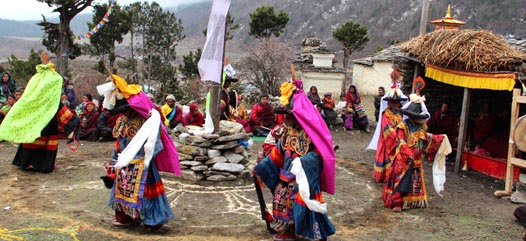Up until about the 1920s, the Sherpa people made a living through some high altitude farming, weaving, and livestock raising. Although, as I explained in the homeland portion of the blog, there's not many types of crops that will grow at such high altitudes and harsh climates, therefore their agriculture was very selective and didn't lead to much money. Next come the 1920s, and the first wave of climbing expeditions and a new opportunity for money. Since around then, their economy has been driven by their tourism.
Their cultural world, although has been intertwined with some Western ideals brought by the climbers and tourists, is still based around their villages and their religion. The Sherpa people are primarily Buddhist and some daily activities are centered around the village temple. The Buddhism stems from their original homeland of Tibet and the old Buddhist temples and ways of life which were brought with them on their migration to their present regions of Nepal. Although they are mostly Buddhist, they still hold to many traditional religious beliefs which I will explain later.
Next I'm going to just give a few short examples of some cultural practices and other things that they do which are key to them as a culture.
- Every Sherpa individual will have the name Sherpa at the end of their name. This is for a few reasons, but mainly to show their identity and ethnic credentials
- The well known colorful rectangular flags are prayer flags and are meant to bless the surrounding area
- There a few different types of shoes that they would wear and one, the Kacha, has all but disappeared due to Western shoes
Here's some examples of their cultural dress:
Here are the prayer flags:







